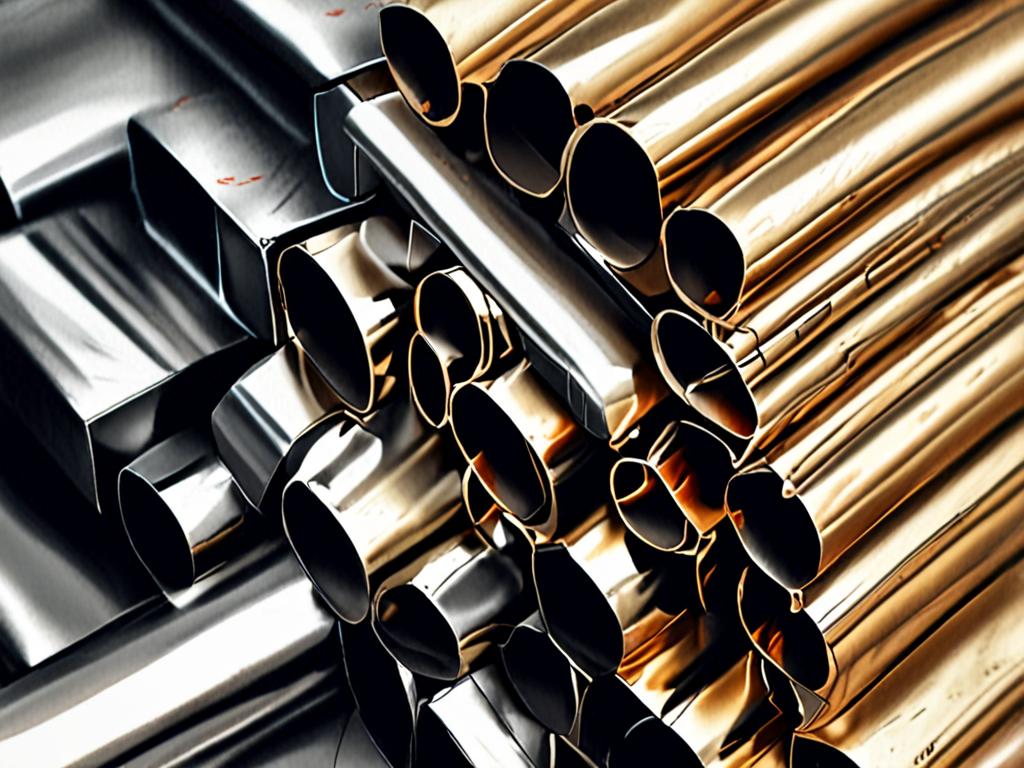
- +8615586668226
- [email protected]
- No. 30, Hongbang Industrial Park, Shenzhen

Non-ferrous metals, simply put, are metals that do not contain iron. These metals are prized for specific properties like corrosion resistance, conductivity, and malleability. From the copper in your electrical wiring to the aluminum in your soda can, non-ferrous metals are ubiquitous in modern life. Their unique characteristics make them indispensable in a wide array of applications.
Non-ferrous metals include aluminum, copper, brass, zinc, and tin, among others. Think of the CNC Machining processes used to shape these metals into intricate parts for everything from smartphones to airplanes. They are essential for industries like Electronics and Medical Devices.
Ferrous metals, unlike their non-ferrous counterparts, do contain iron. This key difference significantly impacts their properties. Ferrous metals are typically magnetic and susceptible to rust. Think of steel beams used in construction or the iron in your cast iron skillet. While their strength and durability are advantageous, their susceptibility to corrosion requires specific protective measures.
Common examples of ferrous metals include steel, cast iron, and wrought iron. These metals are frequently used in Industrial Equipment and Automotive applications due to their strength and magnetic properties.
The core difference, as mentioned above, lies in the presence or absence of iron. This fundamental distinction leads to a cascade of other differing properties. Non-ferrous metals are typically more resistant to corrosion and offer better conductivity. Ferrous metals, on the other hand, are often stronger and magnetic. Choosing the right metal depends entirely on the specific application.
| Feature | Ferrous Metals | Non-Ferrous Metals |
| Iron Content | Present | Absent |
| Magnetism | Magnetic | Generally Non-Magnetic |
| Corrosion | Susceptible to rust | More resistant |
| Conductivity | Lower | Higher |
| Cost | Generally Lower | Generally Higher |
| Recyclability | Recyclable | Recyclable |
Recycling non-ferrous metals is vital for both economic and environmental reasons. It conserves natural resources, reduces energy consumption, and minimizes landfill waste. Many non-ferrous scrap metals are usually recycled, contributing significantly to a circular economy. This benefits industries utilizing these recycled non-ferrous metals, such as those offering CNC Solutions.
For example, recycling aluminum requires only 5% of the energy needed to produce new aluminum from raw materials. This significant energy saving highlights the importance of recycling programs and responsible Materials management.
Copper: Known for its excellent electrical and thermal conductivity, copper is a cornerstone of electrical systems worldwide. It is also highly resistant to corrosion.
Aluminum: Lightweight and strong, aluminum is a versatile metal used in everything from beverage cans to aircraft components. It also has a high strength-to-weight ratio.
Brass: An alloy of copper and zinc, brass is valued for its durability, corrosion resistance, and attractive golden appearance.
Zinc: Often used as a protective coating for steel (galvanizing), zinc also plays a crucial role in batteries and die-casting.
These are just a few examples of the many non-ferrous metals available, each with its own unique set of desirable properties.
Non-ferrous scrap metals find new life in various applications after being recycled. Copper scrap can be re-melted and used to produce new wiring, while aluminum scrap can be used in the production of new cans or automotive parts. Recycling these Fabrication Services reduces the need for mining virgin materials, lessening the environmental impact.
Metal supermarkets offer a convenient source for various metal types, including non-ferrous metals. These stores provide a range of shapes and sizes, catering to both industrial and individual needs.
Alloys, which are mixtures of two or more metals, can significantly alter the properties of non-ferrous metals. For example, adding zinc to copper creates brass, which is harder and more durable than pure copper. This ability to tailor properties through alloying makes non-ferrous metals incredibly versatile.

Non-ferrous metals are essential in industries like aerospace, where lightweight yet strong materials are crucial. Aluminum, for example, is widely used in aircraft construction due to its high strength-to-weight ratio. Other non-ferrous metals like titanium and nickel alloys are used in jet engines and other high-performance components.
Recycling non-ferrous metals contributes significantly to environmental sustainability. It reduces the need for mining, which can have detrimental effects on ecosystems. Furthermore, recycling conserves energy and reduces greenhouse gas emissions, mitigating the impact of climate change.
What are some other examples of non-ferrous metals? Magnesium, nickel, lead, and titanium are other important non-ferrous metals.
Are all non-ferrous metals expensive? While some non-ferrous metals like gold and platinum are precious metals and thus expensive, others like aluminum are relatively inexpensive.
Can ferrous metals be recycled? Yes, ferrous metals are highly recyclable.
Where can I learn more about the Machining Services related to non-ferrous metals? You can find further information on websites dedicated to machining and manufacturing processes.
Non-ferrous metals do not contain iron and offer properties like corrosion resistance and high conductivity.
Ferrous metals contain iron and are often magnetic and susceptible to rust.
Recycling non-ferrous metals is crucial for environmental sustainability and resource conservation.
Different alloys can enhance the properties of non-ferrous metals, making them suitable for a wide range of applications.
Non-ferrous metals play a critical role in numerous industries, from aerospace to consumer products.
Get the latest trends and facts about CNC fabrication from our blog.
Shenzhen Runkey Precision Technology Co. Ltd, a subsidiary of the Tensun Group, is your trusted one-stop solution for custom manufacturing from prototyping to production.Transforming your idea into reality with digital manufacturing resources,streamlined processes, expert guidance,accelerated timelines, and uncompromising quality.
©2024. CNC Fabrication All Rights Reserved.